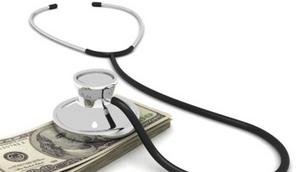Sep 17, 2013, 1:15pm EDT Updated: Sep 17, 2013, 3:00pm EDT

Enlarge
Alex Slobodkin
Health insurance prices in Maryland will be competitive with other states that have released exchange plan rates.
Small businesses that buy health insurance through Maryland’s new exchange will likely pay more than they did last year, but less than companies elsewhere in the country.
The Maryland Insurance Administration on Tuesday released premium rates for plans that will be sold to small businesses through the state health exchange’s Small Business Health Options Program (SHOP). The rates range from 4.9 percent less than comparable 2013 plans to 14.6 percent more — increases that are on par with historic rate increases in the state’s small group insurance market.
“I do feel we’re in really good shape,” said Rebecca Pearce, executive director of Maryland Health Benefit Exchange, which will manage the new insurance marketplace, called Maryland Health Connection.
Businesses with between two and 50 employees can shop for insurance on through Maryland Health Connection, the exchange’s virtual marketplace, beginning Jan. 1.
Insurance carriers had sought more modest rates increases for small group exchange plans because that market is considered more stable.
MORE: How rates compares under the Maryland health exchange
Comparatively, insurers sought steep increases for individual exchange plans, in part to compensate for the large risk of insuring additional people with health problems. The state released rates for individual exchange plans in July.
Prices in Maryland will be competitive with other states that have released exchange plan rates. For example, a silver level plan for a 40-year-old nonsmoker in Maryland will cost between $208 and $435 a month, depending on the insurance carrier. (The exchange ranks plans by “metal level” based on the plan’s cost sharing. Silver level plans cover about 70 percent of health expenses.)
Sarah covers health care, higher education, biotech and technology.
0 comments:
Post a Comment